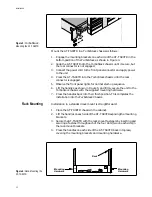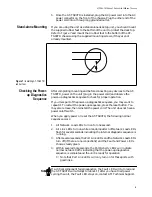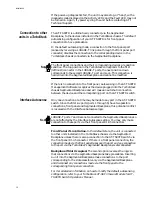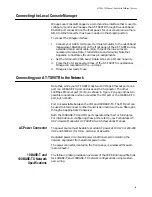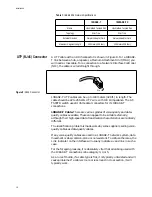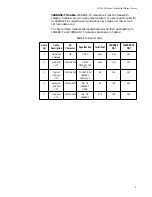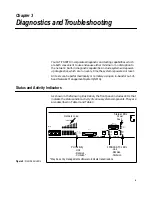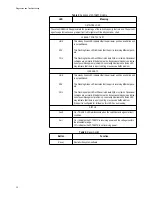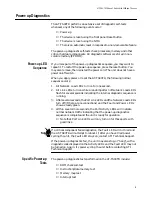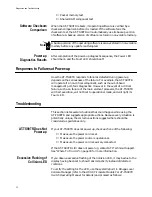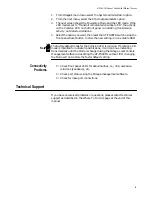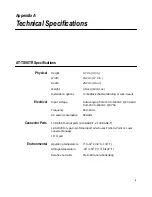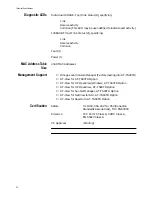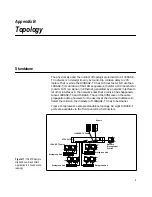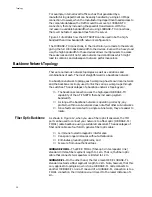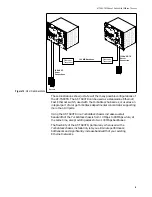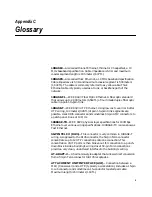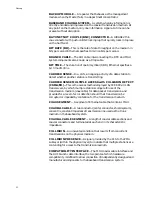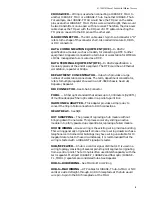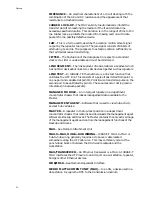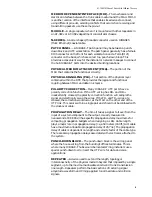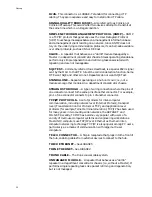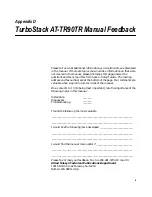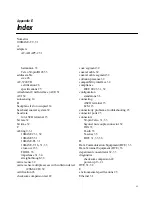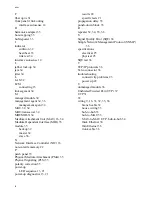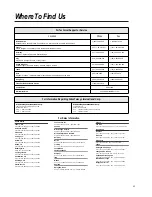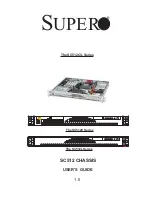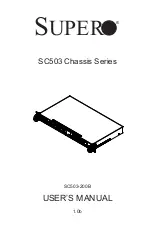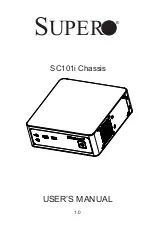
Topology
28
For example, internal local traffic such as that generated by a
manufacturing department can be easily handled by a single 10 Mbps
connection. However, when the manufacturing department needs access to
the corporate database, the traffic could travel over a 100BASE-TX
connection, thereby increasing the speed of transmission. With the
increase in available bandwidth when using 100BASE-TX connections,
there will be faster response times from the server.
Figure 11 illustrates how the AT-TS90TR can be used in both a high-
bandwidth and low bandwidth network configuration.
The 100BASE-TX connections, in the illustration, are made to the servers
giving the full 100 mbps bandwidth to the devices. Even with a heavy load
use, the high bandwidth to these devices allows multiple users to access
these devices and still not create network load conditions which might
lead to collisions and subsequent network performance loss.
Backbone Network Topology
There are numerous network topologies as well as variations and
combinations of each. The most staightforward is a backbone network.
In a backbone network topology, each workgroup has its own local network
and the backbone is simply used to link the various workgroups through
the switches. The advantages of a backbone network topology are:
❑
The backbone connection uses the high-speed 100BASE-TX
capability of the AT-TS90TR thereby increasing system
bandwidth.
❑
As long as the backbone network is operating correctly, any
problem within a sub-network does not affect other sub-networks.
❑
Since faults are isolated to a single sub-network, they are easier to
locate.
Fiber Optic Backbone
As shown in Figure 12, when you use a fiber optic transceiver, the MII
port can be used to connect your network to a fiber optic (100BASE-FL/
FOIRL) cable backbone using a suitable transceiver. The advantages of
fiber optic cable are fourfold. In general, fiber optic cable:
❑
Is immune to electromagnetic interference
❑
Can span longer distances without attentuation
❑
Eliminates grounding problems, and
❑
Is secure from unauthorized taps
100BASE-FOIRL. The IEEE FOIRL (fiber-optic inter-repeater link)
standard limits a fiber segment length to 1 km. That is, the fiber optic
cable that connects two repeaters is limited to 1 km.
100BASE-FL. On the other hand, the more recent IEEE 10BASE-FL
standard extends a fiber segment length to 2 km. Note, however, that this
only applies to topologies in which one 100BASE-FL node connects to
another 100BASE-FL node. If one end of a 100BASE-FL connection is to a
FOIRL connection the limitation would revert to the lesser distance of 1
km.

